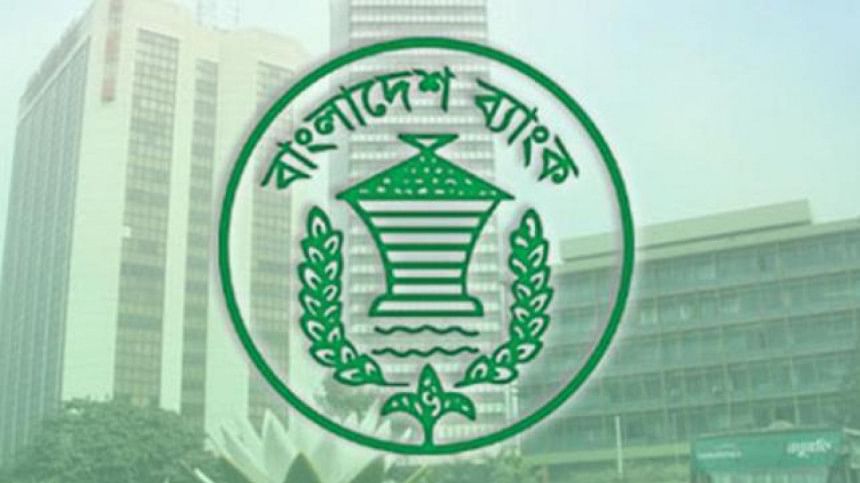Cost of foreign borrowing may rise

The significant depreciation of the taka, upward movements of interest rates in the advanced and emerging economies, and the tight global financial condition might lift the cost of foreign borrowings and debt burden, said the Bangladesh Bank.
Widening current account deficit in the face of a surge in imports, soaring global energy and non-energy commodity prices, and tepid remittance inflows, monetary tightening by the US Fed, and geopolitical tension together led to depreciating pressure on the taka against the US dollar.
Moreover, the BB has allowed more flexibility in the exchange rate culminating in a sharp depreciation of the taka.
The waning of the current account deficit, the net sales in the foreign exchange market, and several policy measures of the Bangladesh Bank helped moderate the rate of depreciation, said the central bank's quarterly report for July-September.
The BB sold $3.6 billion in the quarter to mitigate the demand-supply gap in the foreign exchange market. Consequently, the gross official foreign exchange reserve declined to $36.48 billion in September.
The current depreciation of the local currency and several policy initiatives aimed at increasing exports and remittance inflows and limiting luxury and unnecessary imports are expected to help improve the current account balance and stabilise the exchange rates of the taka in the coming months.
However, it added that the exchange rate volatility emanating from the Russia-Ukraine war and worsening non-performing loans will remain a concern in the coming months.
The continuous BB's intervention by selling US dollars in the foreign exchange market to mitigate the pressure on the balance of payments might create some downside risk in liquidity conditions in the banking sector.
"Nevertheless, good governance in the banking sector, an enhanced loan recovery process, and constant monitoring would play an important role in maintaining stability in the banking industry," the quarterly report said.
The war-induced global supply chain disruption and the volatility in commodity markets continued to have spillover effects on the robust post-pandemic recovery of Bangladesh's economy.
Given the current external and internal macroeconomic challenges, Bangladesh's growth performance is expected to be moderated marginally in FY23. Consequently, the real GDP growth target was adjusted downward to 6.5 per cent from the earlier forecast of 7.5 per cent for FY23.
The economy is expected to remain broadly stable in FY23 hinging upon proactive and timely measures of the government and the BB to ensure adequate agriculture production, industrial output, and service sector activities.
However, the continuous unrelenting challenges of the global economy due to the war, the overshooting cost-of-living driven by persistent and increasing inflation pressures, and the slowdown of major economies may have some negative externalities over Bangladesh's economy, the report warned.
"Policy-makers should continue to remain vigilant and work on various alternative policy options to sustain against any adverse global economic shock," said the BB.
The current level of high inflation rate may persist throughout the ongoing fiscal year, according to a forecast of the BB.
The central bank said the inflation outlook is subject to significant uncertainty, with risks arising from the path of global commodity prices, the domestic fiscal and monetary policy stance, and the exchange rate volatility.
Due to the significant supply shock brought on by the rise in fuel and power costs, inflation is anticipated to stay around current levels for much of FY23, according to the report.
Inflation stood at 8.71 per cent in December, down 14 basis points from the month before.
Credit to the private sector maintained a strong growth path in the first quarter of FY23 following the trend during FY22. Against the growth target of 13.6 per cent for December, credit to the private sector grew 13.93 per cent in the July-September quarter mostly because of the availability of low-cost and easy credit facilities and various sector-specific refinance schemes.
Credit to agriculture, construction, trade and commerce, and consumer finance grew 15.41 per cent, 9.38 per cent, 15.94 per cent, and 39.38 per cent, year-on-year. Credit to the industrial sector moderated to 8.99 per cent.
But the expansion of credit to the private sector is anticipated to strengthen even further with major impetus from increased momentum in industrial activities, higher external sector demand and favourable developments in related sectors during the remaining quarters of FY23.
The sizable private sector credit off-take, falling deposit growth on the back of negative real interest rates on deposits, and increased bank spending on US dollars squeezed up the banking system liquidity, said the BB.
The report said a broad-based recovery of the economy appeared to have continued in the three months to September.
"It is expected that growth will pick up in FY23 stemming from rising demand, recovery in investment, and growing remittance inflows."
As the domestic energy price is administered, elevated global energy prices will raise the budget deficit, it added.

 For all latest news, follow The Daily Star's Google News channel.
For all latest news, follow The Daily Star's Google News channel. 



Comments